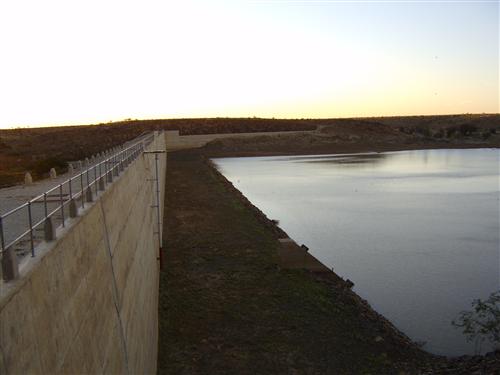A lake is a body of standing water, shaped by the geography of an area. The flow of water may be reduced by low relief or by a narrowing of the channel, allowing the water to accumulate (Pidwirny 2006a).
A reservoir is a body or water that collects behind a man-made dam wall or weir. Reservoirs are built to gather water to supply for domestic, industrial or agricultural uses. The controlled release of water from a reservoir is also used to generate electricity. Dams vary in size; small dams are built by individual farmers to retain water for irrigation and livestock watering; while large dam walls are constructed by national authorities for large-scale uses such as irrigation schemes and hydropower generation.

Dreihuk Dam, Namibia.
Source:DRFN 2004
( click to enlarge )
The amount of time water stays in a reservoir or lake is known as the residence time; the time it takes to change all the water in a lake or reservoir is known as the replacement rate. Residence times and replacement rates range from years in large natural lakes, to weeks in large reservoirs, and days in run-of-the-river dams.
